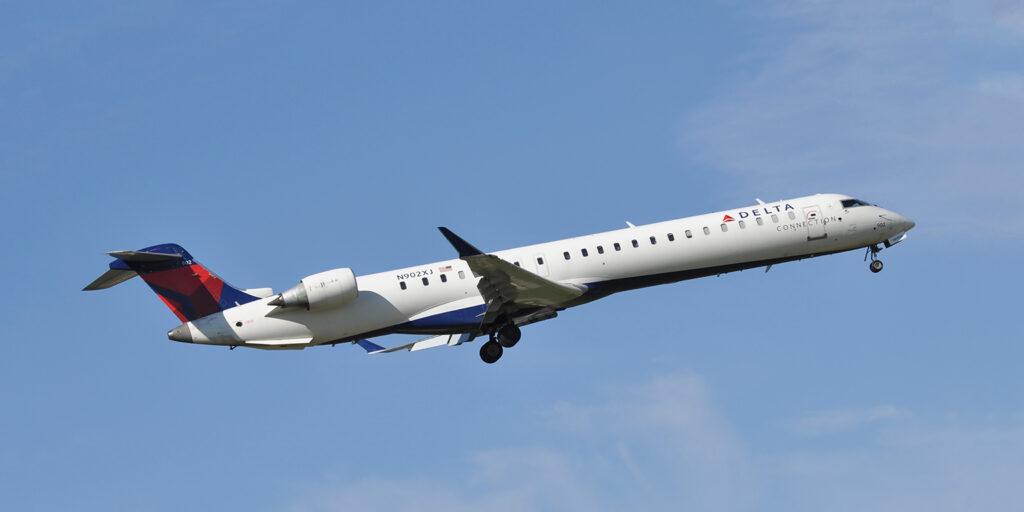
How To Stay Fit On The Road
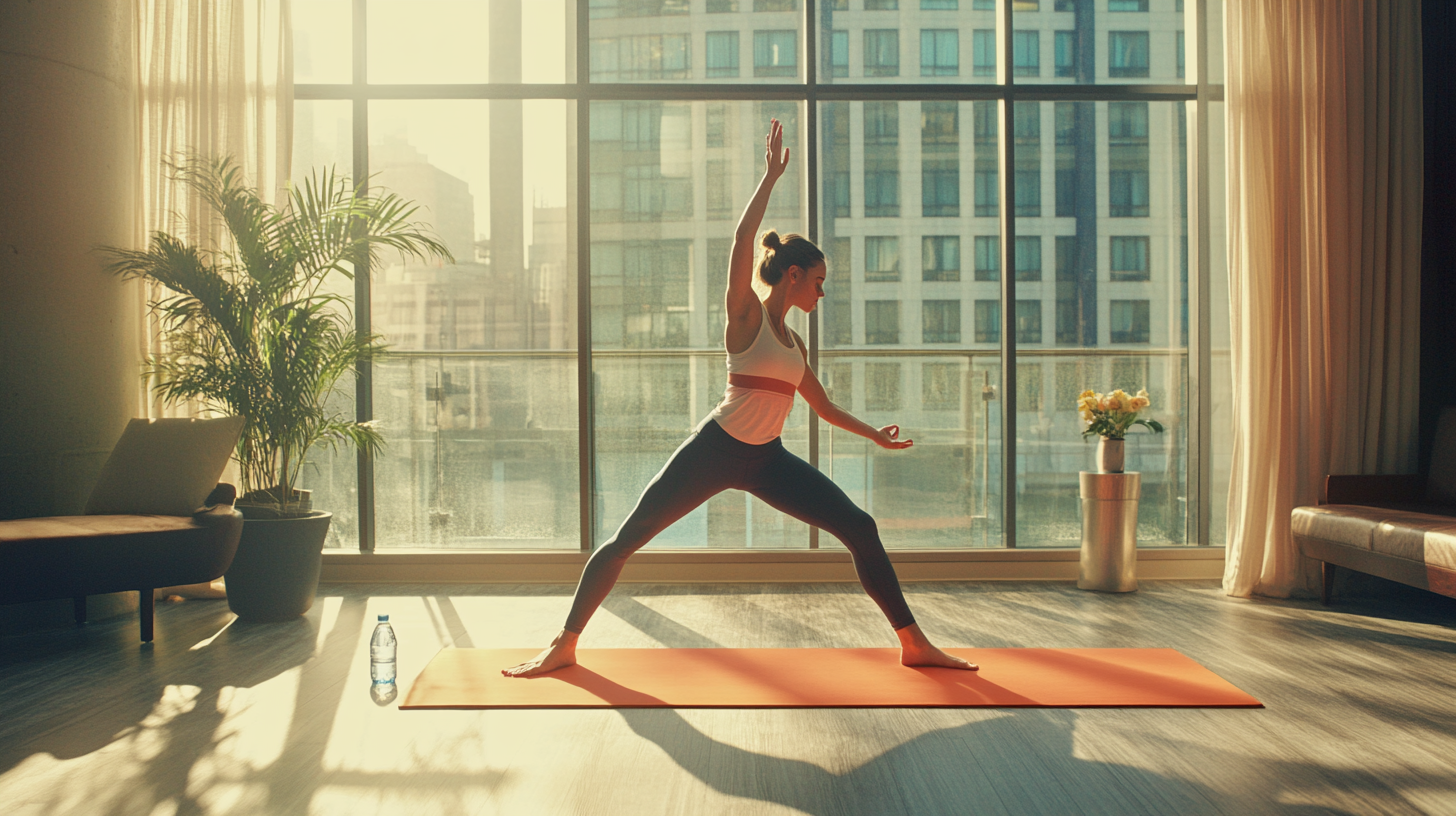
Traveling can be an exhilarating experience, offering new sights, sounds, and cultures that enrich our lives and broaden our perspectives. From the bustling streets of New York City to the serene landscapes of Bali, the world is full of adventures waiting to be discovered. However, amidst the excitement, travel often disrupts our regular routines, making it challenging to maintain a healthy lifestyle. Long flights, unfamiliar environments, and indulgent dining can throw anyone off balance.
Whether you’re a frequent business traveler hopping between meetings in different time zones, or a globetrotter backpacking across continents, staying fit on the road is essential for your overall well-being. Good health enhances your travel experience, allowing you to engage fully with your journey and make the most of every moment. In this comprehensive guide, we’ll explore practical strategies to help you keep up with your fitness goals while embracing the joys of travel. From quick hotel room workouts to mindful eating practices, we’ve got you covered.
Embrace Bodyweight Workouts Anywhere
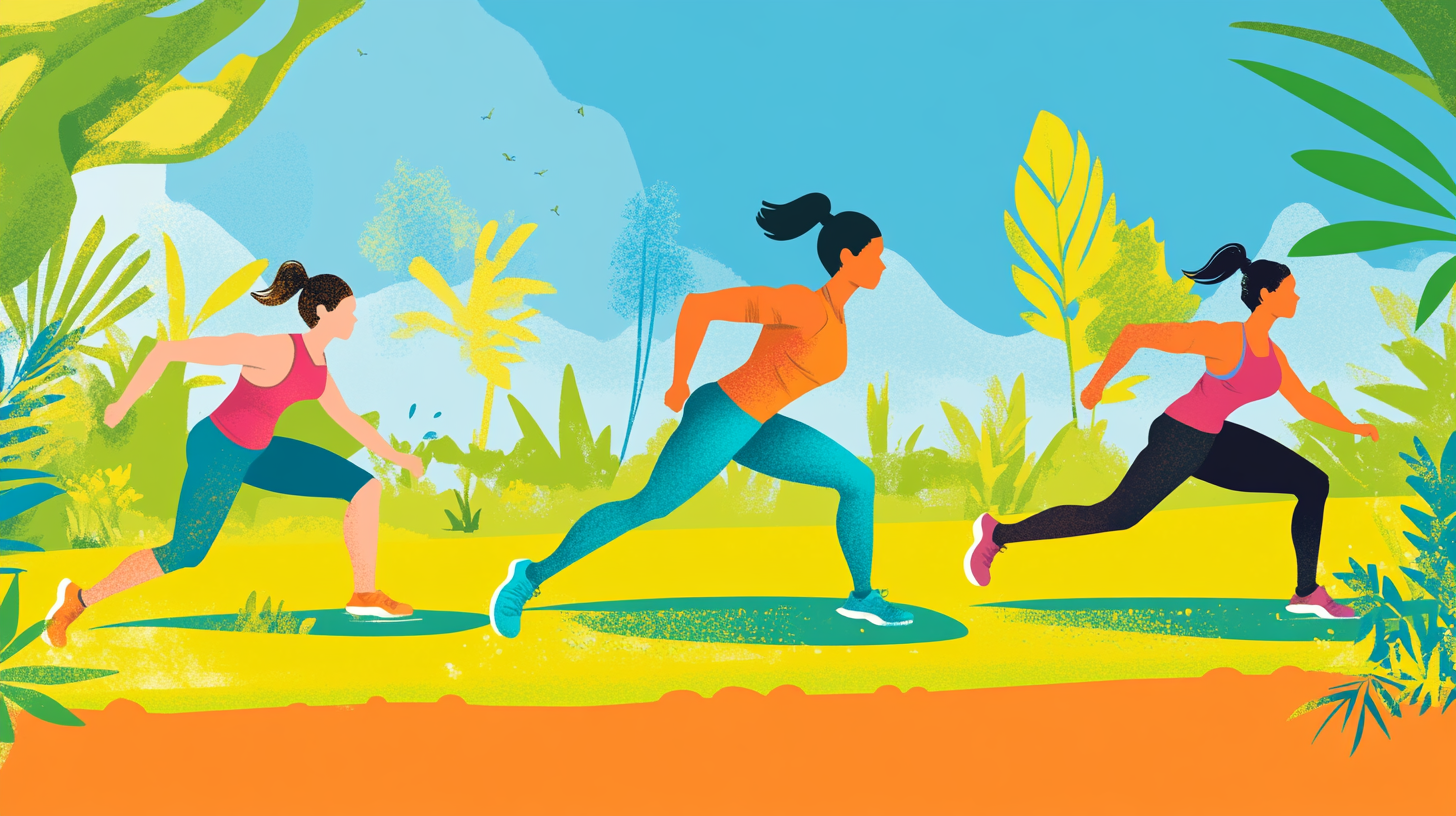
One of the most effective ways to stay fit on the road is by incorporating bodyweight workouts into your routine. These exercises require no equipment and can be done in the comfort of your hotel room, a nearby park, or even at the airport during a layover. Read more about these workouts at Nerd Fitness. Classic moves like push-ups (watch on YouTube), squats (watch on YouTube), lunges (watch on YouTube), and planks (visit Verywell Fit) are fantastic ways to maintain muscle tone and cardiovascular health. Not only do they save time, but they also ensure you remain consistent with your fitness regimen, regardless of your location.
Travel often involves unpredictable schedules, making gym visits challenging. By mastering a set of bodyweight exercises, you eliminate the need for specialized equipment or facilities. Consistency is key, and these workouts make it easier to squeeze in a session, no matter where you are. Additionally, bodyweight exercises can be modified to suit all fitness levels, ensuring you continue to challenge yourself (advanced bodyweight exercises on Nerd Fitness). For instance, if standard push-ups become too easy, try decline push-ups or one-arm push-ups.
Incorporating high-intensity interval training (HIIT) can amplify the benefits of bodyweight exercises. Learn more about HIIT on WebMD. Short bursts of intense activity followed by brief rest periods maximize calorie burn and boost metabolism. This approach is perfect for travelers with tight schedules, offering an efficient way to stay fit without lengthy workouts. Apps like Tabata Timer (available on Google Play) or Interval Timer (available on Google Play) can help you structure your HIIT sessions effectively.
Consider downloading fitness apps that specialize in bodyweight programs. For example, the Nike Training Club app (learn more at Nike), Freeletics (visit Freeletics), or the 7 Minute Workout app (available on Google Play) offer guided routines that you can follow anywhere. These apps often include video demonstrations and customizable workouts to fit your fitness level and time constraints.
Remember, the goal is to keep your body active. Even dedicating 15 minutes each day to bodyweight workouts can significantly impact your fitness journey. It’s about making fitness a non-negotiable part of your daily routine, regardless of where your travels take you. Set a specific time each day, perhaps in the morning before you start your activities, to ensure you don’t skip your workout (morning workout tips from Planet Fitness).
Prioritize a Balanced Diet While Traveling
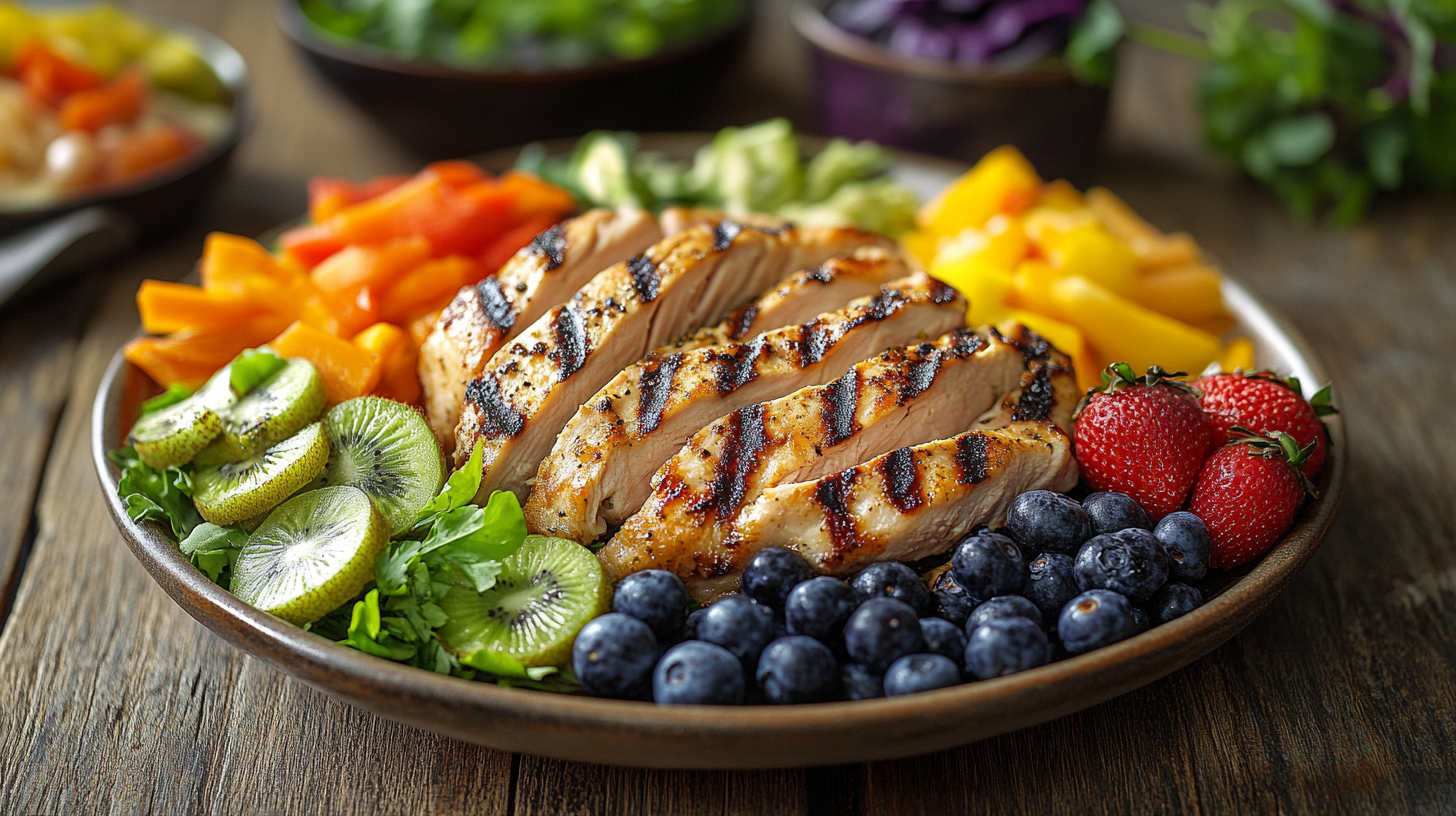
Maintaining a balanced diet on the road is crucial for staying fit and energized. Travel exposes you to diverse cuisines, and it’s tempting to indulge in every new dish you encounter (explore local cuisine on Eater). While it’s important to enjoy local delicacies and embrace new food experiences, moderation is essential. Focus on incorporating plenty of fruits, vegetables, lean proteins, and whole grains into your meals (healthy eating advice from Healthline). These foods provide the necessary nutrients to fuel your body and support your fitness goals.
Planning ahead can make a significant difference. If possible, book accommodations with kitchen facilities or a kitchenette to prepare some of your meals (see options on Upgraded Points). Platforms like Airbnb (visit Airbnb) often offer homes with full kitchens. Visiting local markets not only immerses you in the culture but also allows you to select fresh, healthy ingredients (local markets and trails on AllTrails). Preparing your meals gives you control over portions and the types of food you consume, helping you avoid unnecessary calories and unhealthy additives.
When dining out, look for restaurants that offer healthy options. Many places now label dishes that are lower in calories or offer vegetarian and vegan options (find options on Happy Cow). Don’t be afraid to customize your orders—ask for dressings on the side, grilled instead of fried, and extra vegetables. Apps like Happy Cow can help you find healthy eateries in your area.
Bringing portable healthy snacks can prevent you from making poor food choices when hunger strikes (see suggestions on Healthline). Nuts, dried fruit, protein bars, and whole grain crackers are easy to carry and can keep your energy levels stable throughout the day. Consider packing a few in your day bag or carry-on luggage.
Staying hydrated is equally important, especially when traveling to different climates or at high altitudes (learn more about hydration at the Mayo Clinic). Always carry a reusable water bottle to ensure you’re drinking enough water throughout the day (check out options like the Brita Filter Water Bottle on Amazon). Products like the Hydro Flask (visit Hydro Flask) or a Brita Filter Water Bottle are excellent choices, as they keep your water cool and, in the case of filtered bottles, ensure it’s safe to drink. Dehydration can lead to fatigue, headaches, and decreased physical performance, hindering your ability to stay active and enjoy your trip.
Avoid excessive consumption of sugary beverages, such as sodas and sweetened teas, and alcohol, which can contribute to unnecessary calorie intake and dehydration. Read more about the effects of sugary drinks at CDC. If you choose to drink alcohol, do so in moderation, and balance it with plenty of water.
Remember, balanced nutrition supports your immune system, which is vital when exposed to new environments and potential travel-related stress (see immune system support tips from Harvard Health). Eating a diet rich in vitamins and minerals can help prevent illness, ensuring you don’t miss out on any part of your trip. By prioritizing a healthy diet, you’re setting a strong foundation for overall fitness on your journey.
Utilize Hotel Amenities and Local Facilities
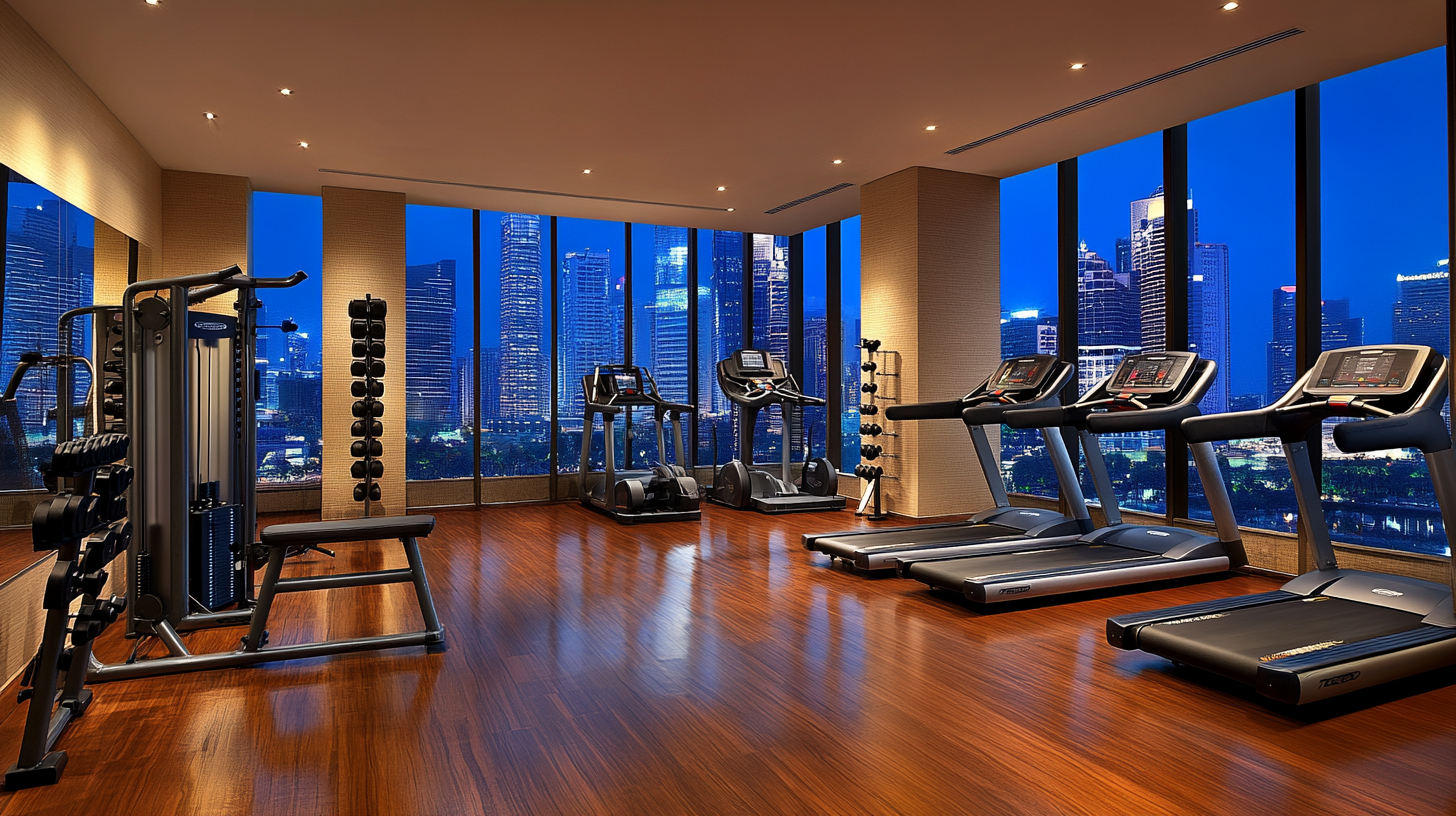
Many hotels offer fitness centers, swimming pools, or partnerships with local gyms. Before booking your accommodation, check the amenities to see what’s available (find out more on Fittest Travel). Websites often list these details, or you can contact the hotel directly. Utilizing these facilities can help you maintain your regular exercise routine while on the road.
Swimming is an excellent low-impact activity that works multiple muscle groups (discover the benefits on Healthline). If your hotel has a pool, incorporate some laps into your daily schedule for a full-body workout. Not only is swimming great for cardiovascular health, but it’s also gentle on the joints, making it suitable for all fitness levels.
Alternatively, explore local fitness classes or facilities. Participating in a yoga class, joining a local running club, or attending a group fitness session can be both a workout and a cultural experience. Apps like ClassPass (learn more at ClassPass) allow you to access various fitness studios worldwide with a single membership. It’s an opportunity to meet new people and stay motivated by involving yourself in community activities.
Don’t hesitate to ask the hotel staff for recommendations. They often have insights into nearby parks, walking trails, or recreational areas ideal for exercise (explore local parks on AllTrails). They may also know about special fitness events happening during your stay, such as free outdoor yoga sessions or community runs.
Exploring the city on foot or by bicycle can also enhance your physical activity. Many cities offer bike-sharing programs, such as Citi Bike in New York City (visit Citi Bike) or Vélib’ in Paris (visit Vélib’). Walking or cycling not only contributes to your daily exercise but also allows you to experience the destination more intimately. Discover more about bike-friendly cities at PeopleForBikes.
Utilizing stairs instead of elevators and walking instead of taking taxis are simple ways to increase your daily physical activity. Learn how to incorporate incidental exercise on Real Simple. If public transportation is necessary, consider getting off a stop early and walking the remainder of the distance. These small changes can accumulate significant benefits over the course of your trip.
Remember, the goal is to integrate fitness into your travel experience seamlessly. By leveraging available resources and being mindful of opportunities to be active, you make staying fit both convenient and enjoyable.
Incorporate Active Tourism into Your Itinerary

Active tourism is a fantastic way to explore new destinations while staying fit. Discover more about active tourism options on Washington.org. Instead of conventional sightseeing methods that often involve sitting on buses or in cars, consider more engaging activities like hiking, biking, or walking tours. These activities not only provide physical benefits but also offer a unique perspective of the locale, allowing you to connect with your surroundings on a deeper level.
Many cities are designed with pedestrian-friendly areas and bike lanes, making it easy to stay active. For instance, cities like Amsterdam, Copenhagen, and Portland are renowned for their cycling infrastructure. Renting a bicycle or opting for a walking tour allows you to immerse yourself more deeply in the environment. Local tour companies often offer themed tours, such as historical walks, food tasting routes, or street art explorations. Use the GPSmyCity app to find self-guided walking tours at your own pace (find out more at GPSmyCity).
Engaging in adventure activities adds excitement to your travel while keeping you physically engaged. Depending on your destination, consider activities like kayaking in Halong Bay, rock climbing in Railay Beach, Thailand, or horseback riding in the Andes. These experiences create lasting memories and contribute to your overall fitness. Discover and book these activities ahead of time with GetYourGuide (visit GetYourGuide) or Viator (visit Viator).
If you’re visiting natural attractions, look for hiking opportunities on platforms like AllTrails. National parks and nature reserves often have trails suitable for different fitness levels. Remember to pack appropriate gear, like comfortable walking shoes, sunscreen, and a hat.
By planning your itinerary with active options, you’re seamlessly blending fitness with leisure. Not only does this approach keep you active, but it also enriches your travel experience. You get to see places off the beaten path and interact with locals in a more authentic way.
Remember to listen to your body and pace yourself according to your fitness level. The goal is to enjoy your activities without overexerting yourself. Staying fit becomes an integral part of your travel, rather than an added chore, when you choose activities that you genuinely enjoy.
Maintain a Consistent Sleep Schedule
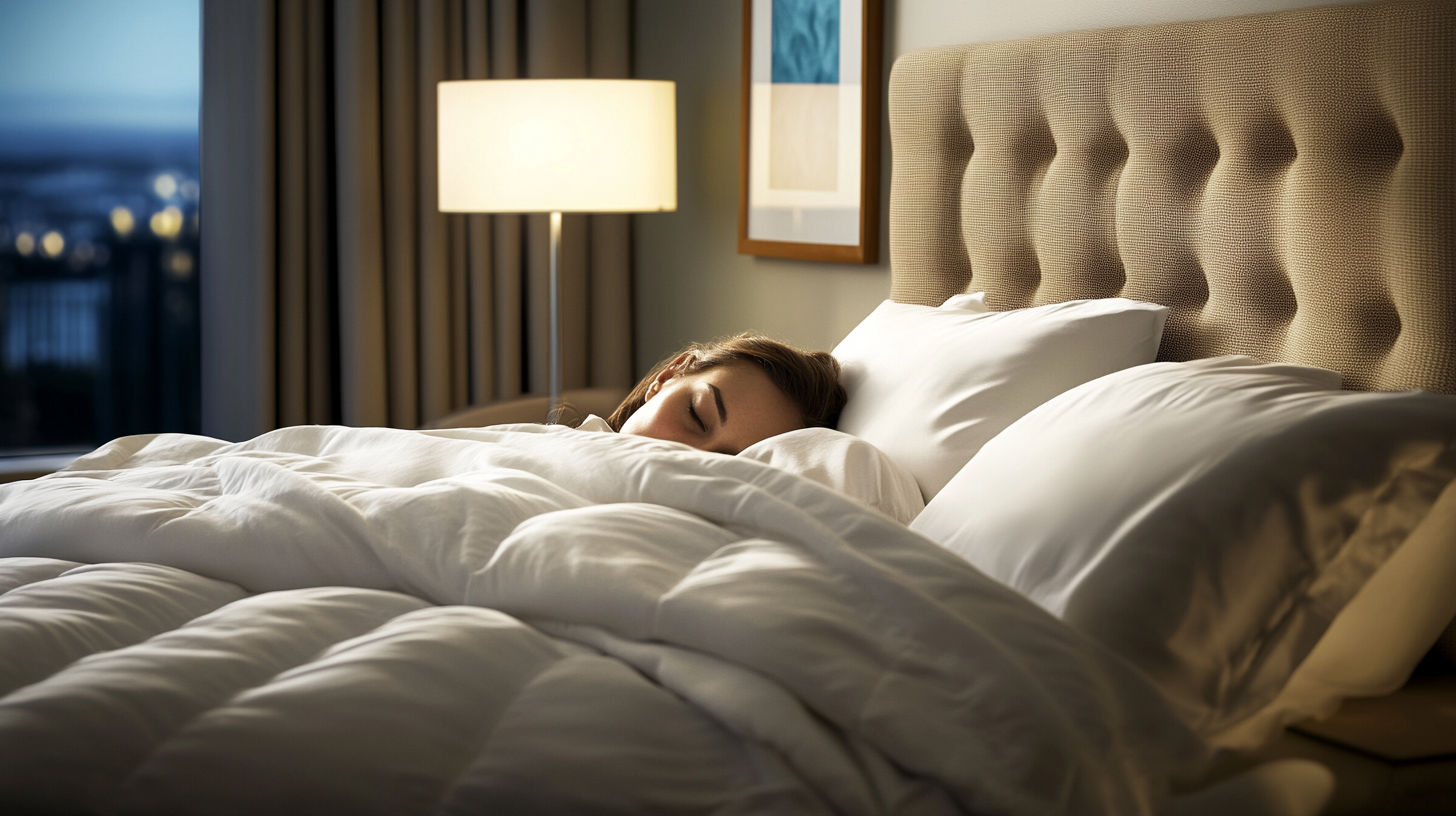
Sleep is a critical component of fitness that is often neglected during travel. Learn about the importance of sleep at Sleep Foundation. Time zone changes, long flights, and packed schedules can disrupt your sleep patterns. Prioritizing adequate rest is essential for muscle recovery, mental health, and overall physical performance. Without sufficient sleep, your body doesn’t have the opportunity to repair itself, which can lead to decreased immunity and increased fatigue.
Establish a bedtime routine to signal your body that it’s time to wind down. Explore sleep hygiene tips at Cleveland Clinic. This could include activities like reading, meditating, or gentle stretching. Avoid screen time before bed to enhance sleep quality, as the blue light emitted by phones and laptops can interfere with your body’s production of melatonin, the sleep hormone. Consider using apps or glasses to mitigate blue light exposure.
If you’re traveling across time zones, try to adjust your schedule gradually to align with the new time zone. More information about adjusting to new time zones on Verywell Health. This might involve shifting your sleep and wake times by an hour or two each day before departure. Some travelers find it helpful to use melatonin supplements, but it’s advisable to consult with a healthcare professional before doing so.
Creating a comfortable sleep environment can also make a significant difference. Pack items like earplugs (see options on Amazon), an eye mask, or a travel pillow to improve sleep quality, especially in unfamiliar settings. Using white noise apps or devices can help drown out unfamiliar sounds. Explore options for noise-canceling headphones (find reviews at Wirecutter by NYTimes).
Ensuring you get sufficient rest will keep your energy levels high and support your immune system (read about immune system support at Harvard Health). Adequate sleep also enhances cognitive function, helping you stay alert and responsive, which is especially important when navigating new places.
Remember, rest is as important as physical activity in your fitness journey. By prioritizing sleep, you’re enabling your body to repair and recharge, which is essential for staying fit on the road. Don’t underestimate the power of a good night’s sleep to rejuvenate your mind and body for the adventures ahead.
Stay Accountable with Fitness Apps and Trackers
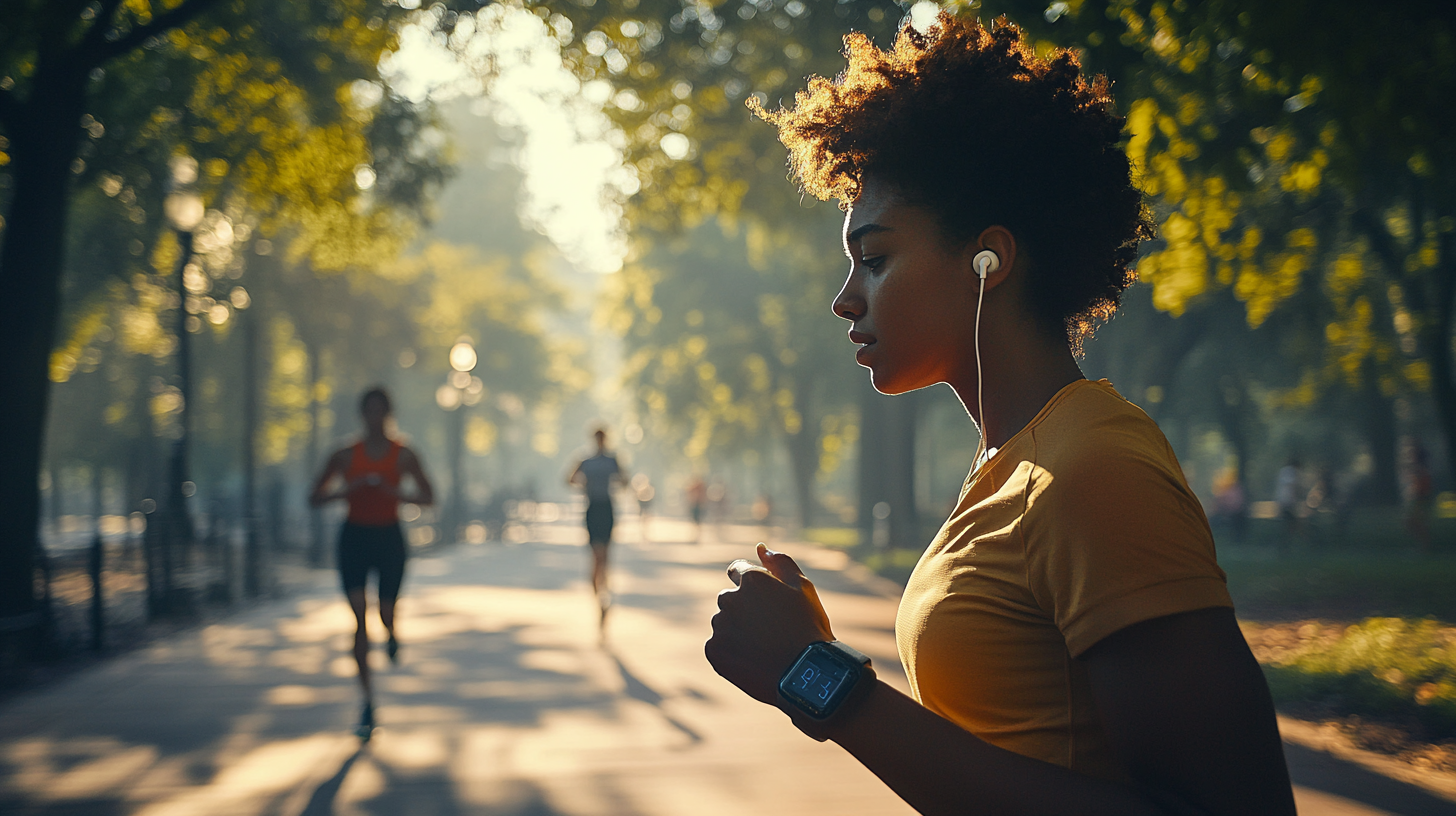
Technology can be a valuable ally in maintaining your fitness goals while traveling. Explore the potential of fitness technology at PCMag. Fitness apps and wearable trackers help monitor your activity levels, set goals, and provide workout ideas. Devices like the Fitbit (visit Fitbit), Apple Watch (visit Apple Watch), or Garmin Forerunner (visit Garmin) not only track your steps and heart rate but also monitor your sleep patterns, providing a comprehensive view of your health.
Apps can offer guided workouts tailored to your environment, whether you have access to a gym or are confined to your hotel room. For instance, the Aaptiv app (visit Aaptiv) provides audio-based fitness classes, while FitOn (visit FitOn) and Down Dog (visit Down Dog) offer video workouts ranging from HIIT to yoga.
Tracking your progress keeps you motivated. Seeing the number of steps taken, calories burned, or workouts completed can inspire you to stay on track. Discover the benefits of fitness tracking on Sutter Health. Many apps also allow you to connect with friends or join virtual communities for added support and accountability. Compete in step challenges or share your workout achievements on social media to keep yourself engaged.
Utilize apps that focus on nutrition as well. Apps like MyFitnessPal (log in to MyFitnessPal) or Lifesum (visit Lifesum) can help you make healthier food choices by providing nutritional information and meal suggestions. Managing your diet becomes easier when you have access to a database of healthy options, even when dining out. Some apps allow you to scan barcodes or search for restaurant menu items to log your meals accurately.
If you’re concerned about data usage or connectivity while abroad, look for apps that offer offline functionality. Always ensure that you’re following data protection guidelines and being cautious about sharing personal information.
Remember, these tools are meant to support you, but it’s important to use them in a way that enhances your travel experience, not detracts from it. Balance is key, and technology can help you achieve that by seamlessly integrating fitness into your journey. Set realistic goals and use these apps to celebrate your progress, not to add stress.
Manage Stress Through Mindfulness and Relaxation Techniques
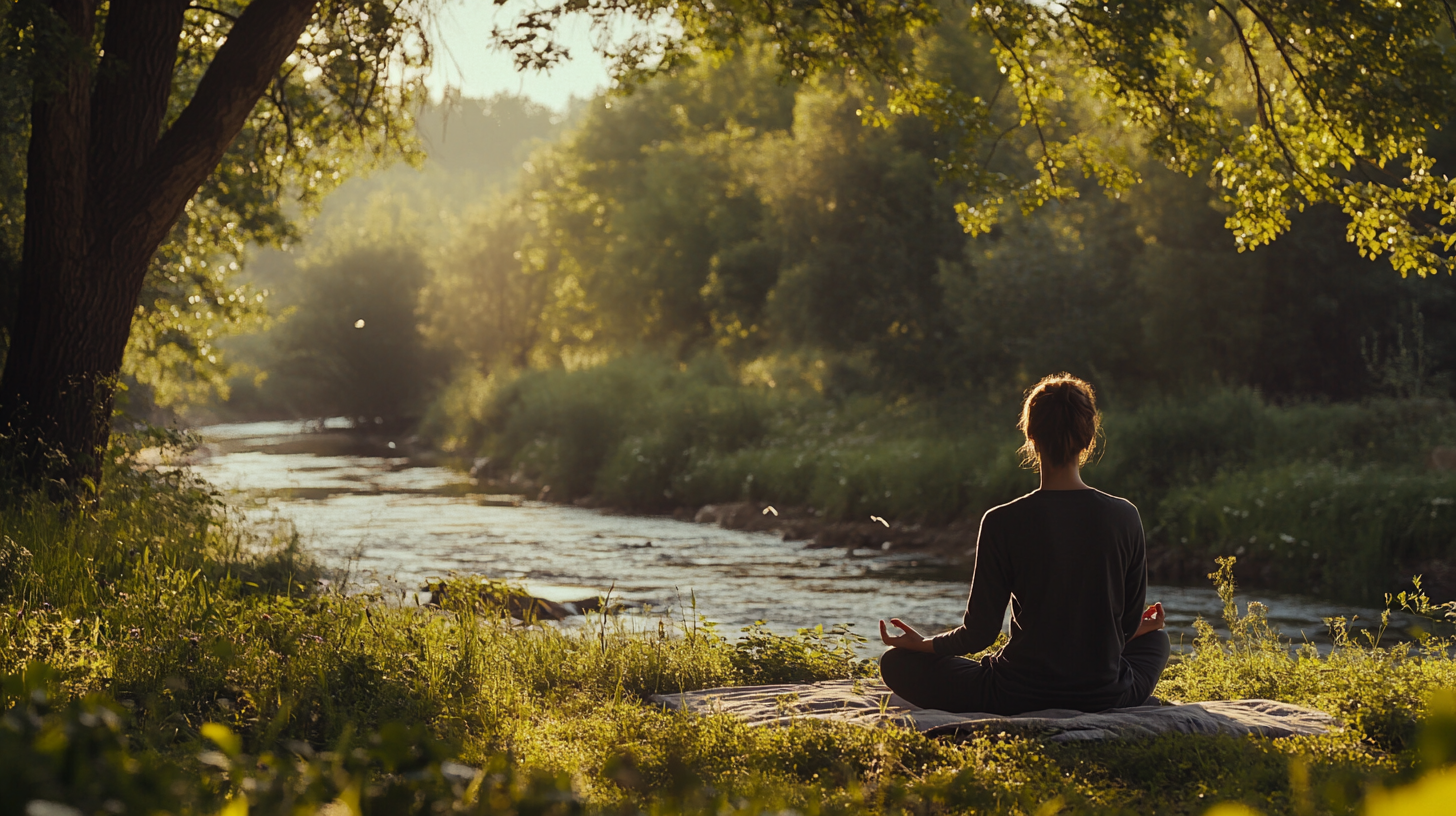
Travel can be stressful, and stress can significantly impact your physical health and overall well-being. Learn more about the connection between stress and health at Wiley Online Library. Incorporating mindfulness and relaxation techniques into your routine can help manage stress levels. Practices like meditation, deep-breathing exercises, and yoga promote mental well-being and complement your physical fitness efforts.
Mindfulness helps you stay present and enjoy the moment, enhancing your travel experience. Explore more about mindfulness at Psychology Today. It also aids in better sleep, improved focus, and reduced anxiety. If you’re new to meditation, guided meditation apps like Headspace (visit Headspace), Calm (visit Calm), or Insight Timer (visit Insight Timer) provide structured programs that are easy to follow. Even just five to ten minutes a day can make a noticeable difference.
Deep-breathing exercises, such as the 4-7-8 technique, can quickly reduce stress and calm your nervous system. More about deep-breathing exercises on Healthline. Progressive muscle relaxation involves tensing and relaxing different muscle groups in your body, which can be especially beneficial during long flights or layovers.
Yoga is another excellent practice that combines physical movement with mindfulness. Learn about the benefits of yoga on Healthline. You don’t need a lot of space to perform simple yoga poses or stretches. Apps like Yoga Studio (visit Yoga Studio) or Down Dog can guide you through sessions tailored to your level and available time.
Listening to calming music, nature sounds, or podcasts can also alleviate tension. Discover relaxation music options on YouTube. Consider creating a relaxation playlist before your trip. Noise-canceling headphones can enhance this experience by blocking out external distractions (view recommendations at Wirecutter by NYTimes).
Taking care of your mental health is a vital component of staying fit on the road. Read more about mental health while traveling at the CDC. Don’t hesitate to set aside time for yourself, even if it’s just a few minutes in the morning or before bed. Journaling is another effective way to process your thoughts and feelings. Bring along a small notebook or use a journaling app to reflect on your experiences.
Remember, fitness encompasses both physical and mental well-being. By managing stress effectively, you’re supporting your overall health and making your travels more enjoyable. A calm mind will enhance your ability to appreciate new places and cultures fully.
Set Realistic Goals and Be Flexible

Setting realistic fitness goals while traveling is important. Discover tips for realistic goal setting at Harvard Business Review. Understand that your usual routine may need adjustments due to time constraints, cultural differences, and environmental factors like weather or terrain. Being flexible with your workouts and expectations helps reduce stress and keeps you motivated.
Focus on maintaining your current fitness level rather than making significant advancements. Explore the concept of maintenance vs. progression at Andrea Larsen PAC. This might not be the time to train for a marathon or start a new intense workout program. Instead, aim to stay active and make healthy choices. Celebrate small victories, like choosing stairs over elevators, walking to your destinations, or completing a quick workout between meetings. These efforts contribute to your overall goal of staying active and can make a big difference over time.
Allow yourself to adapt to circumstances. If a planned workout isn’t possible due to unexpected schedule changes or closures, find alternative ways to stay active. This could mean doing a quick bodyweight circuit in your hotel room, stretching, or even practicing mindfulness exercises (read more about hotel room workouts at Nerd Fitness). This mindset fosters resilience and ensures fitness remains a consistent part of your travel, without becoming a burden.
Consider setting SMART goals—Specific, Measurable, Achievable, Relevant, and Time-bound. Learn more about SMART goals on MindTools. For example, set a goal to walk a certain number of steps each day, which you can track with your fitness app or wearable device. Having clear, attainable goals can keep you focused and provide a sense of accomplishment.
Remember that rest and enjoyment are also important parts of travel. Don’t be too hard on yourself if you miss a workout or indulge in a special meal. Explore the importance of balance and moderation on Psychology Today. Fitness is a long-term journey, and occasional deviations won’t derail your progress.
By setting achievable goals and remaining adaptable, you maintain momentum and continue progressing on your fitness journey. Embracing flexibility allows you to make the most of your travel experience while still prioritizing your health.
Stay Motivated with a Travel Fitness Journal

Keeping a travel fitness journal can enhance accountability and help you track your progress. Learn about fitness journaling at Women’s Health. Documenting workouts, meals, sleep patterns, and how you feel each day provides valuable insights into your habits. It helps identify patterns, successes, and areas needing improvement.
Your journal can be as simple or detailed as you like. Some prefer traditional pen and paper, while others use digital options like note-taking apps or dedicated journaling apps. Check out apps like Journey (visit Journey) or Day One (visit Day One) which offer features like adding photos, location tracking, and mood indicators.
Use your journal as a motivational tool. Reflecting on your experiences and the challenges you’ve overcome can inspire you to stay committed. Include photos, notes about new activities you’ve tried, or healthy recipes you’ve discovered. Sharing experiences can be a stepping stone to social learning (learn more at eLearning Industry). Recording your achievements, no matter how small, can boost your confidence and encourage you to keep going.
Sharing your journey with others can further boost motivation. Whether through a personal blog, Instagram, or other social media platforms, connecting with a community provides support and encouragement. Explore the benefits of social media fitness communities at whop.com. Use hashtags related to travel and fitness to find like-minded individuals. It’s an opportunity to inspire others facing similar challenges and to be inspired in return.
Joining online forums or groups dedicated to travel fitness can also provide a wealth of tips and support. Reddit fitness communities offer a platform to ask questions and share experiences. Websites like Reddit have subreddits focused on fitness and travel where you can interact.
Remember, tracking your journey is about celebrating progress, not perfection. It’s a personal record of your dedication to staying fit on the road. Looking back on your journal can remind you of how far you’ve come and motivate you to continue prioritizing your health.
Conclusion: Making Fitness a Travel Companion

Staying fit on the road doesn’t have to be a daunting task. By embracing bodyweight workouts, prioritizing a balanced diet, utilizing available amenities, and integrating active tourism, you make fitness an integral part of your travel experience. Remember to manage stress, set realistic goals, and stay motivated through tracking your progress. Learn more about the benefits of staying fit while traveling on SET FOR SET.
Travel enriches your life, offering new perspectives and adventures. By maintaining your fitness routine, you ensure that you can fully enjoy these experiences with energy and vitality. You’ll be better equipped to climb those steep trails to breathtaking viewpoints, participate in local dance classes, or simply have the stamina to explore a city all day.
Let these strategies guide you in making health and wellness a constant companion on all your journeys. Remember, every traveler is unique, so find the methods that work best for you. Explore the possibilities of personalized fitness plans at NexttFit. The key is to stay active, be mindful, and enjoy the journey.
For more tips and insights on traveling smart and staying healthy, visit us back at BoardingArea. Safe travels and stay fit!





























